
Despite the popularity diatomaceous earth and bentonite clay have seen in recent years, they are still shrouded in questions and uncertainty. Many people still have no idea what they are, while others are familiar with one or the other, yet wonder which is better and what makes them different. In this article, we're going to give you a crash course in both substances so you can feel informed about the uses, benefits, and pros and cons of each one.
What Is Diatomaceous Earth?
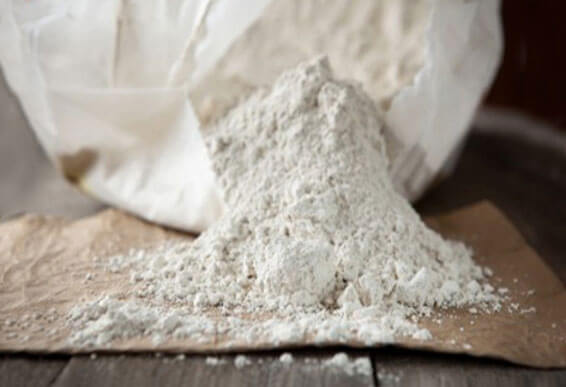
A lot of people think diatomaceous earth (DE) is some kind of dirt, which isn't quite true. DE is made of fossilized diatoms, a type of microscopic algae that collected for thousands of years in now-dry lake beds. These diatom deposits are mined and ground into a fine, off-white powder known as diatomaceous earth. DE contains an assortment of trace minerals, but its main component is silicon dioxide, or silica, which is vital for good health.
There are three main types of DE: food-grade, pest control grade, and pool grade.
Food grade DE meets safety standards outlined by the Food Chemicals Codex and is "generally recognized as safe" by the FDA for you and your pets to ingest and to use in your home.
Pest control grade DE is used to kill insects, but it is naturally chemical-free. Some companies add poisons to pest control grade DE to speed up the process of killing insects, but we do not. In fact, our food grade and pest control DE are the exact same thing, just packaged differently to meet the standards of both the FDA and the EPA.
Pool grade DE is primarily used as a filtration aid in swimming pools. It is heated to extremely high temperatures, which causes it to crystallize. This crystalline silica can be very harmful if inhaled or ingested. We do not sell this kind of DE.
Benefits and Uses of Diatomaceous Earth
A medical study conducted in 1998 suggested that DE "is capable of reducing blood cholesterol and positively influencing lipid metabolism in humans." This is only one of the many potential benefits of using DE. Thousands of testimonials from people all over the world show that DE is influencing their health in positive ways.
Supplement and Detox

People take DE in water, smoothies, or juice as a way to add more silica to the body and detox the digestive system. Its absorbent and mildly abrasive nature makes it capable of binding to heavy metals, toxins, and other junk, helping to expel them from the body. Its absorbent and mildly abrasive nature also helps with the detoxification process.
At the microscopic level, DE is much harder and rougher than bentonite clay. This means that while both substances can be used as internal cleansers, the abrasiveness of DE allows it to do some extra deep cleaning. DE is like mild sandpaper that moves through your system and scrubs off anything that shouldn't be there.
People who take DE internally report increased energy, decreased joint pain, better skin, thicker hair, improved digestive health, clearer thinking, and other improvements to their health.
To take DE internally, begin by taking one teaspoon in liquid daily at least one hour before or two hours after meals. You can increase your dose over time as your body gets used to taking it.
Some people experience flu-like symptoms when they first begin taking DE. This is caused by the toxins being dislodged and leaving your system. These symptoms should go away after a few days. If they persist or get worse, reduce your DE intake, and drink more water. Some people see positive results within a few days of beginning their DE intake, but if it takes longer for you, that's okay. It can take several weeks or more.
Chemical-Free Living
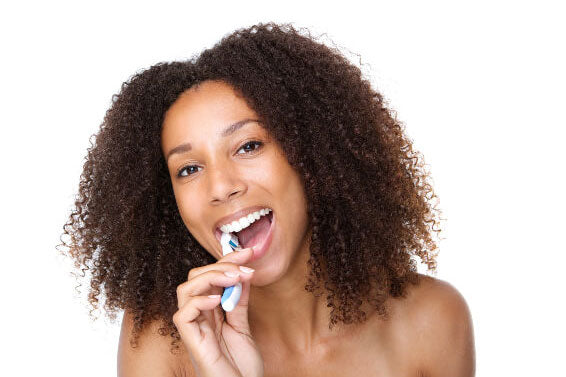
Many people use diatomaceous earth in homemade deodorants, soaps, facial scrubs, toothpaste, and more. Because of its coarse, absorbent nature, it also makes a good cleaner for sinks, tubs, and tile floors. The ability to absorb moisture also makes it a great preservative for stored grain. People opt for these natural do-it-yourself solutions because they help eliminate the need for the harmful chemicals often found in commercial products.
Pesticide
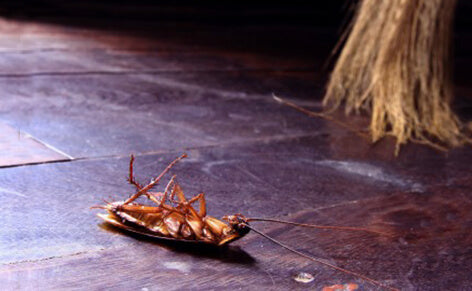
Pest control grade DE is a very effective way to fight off bed bugs, ticks, fleas, ants, and other bugs without using toxic chemicals. DE's bug-killing secret is in its physical structure. Because it is so coarse and porous, it sticks to insects and absorbs moisture from their exoskeletons. Bugs die from dehydration after they have been exposed to DE for an extended amount of time. It works on some bugs in a matter of hours, while for others it can take a couple of days.
Precautions
One of the most important precautions to take with DE is to make sure you get the right grade. Never ingest pool grade or use it around your home, pets, or children. Use food-grade DE for you and your pets, and use a chemical-free pest control grade DE to kill pests around your home and yard.
If you experience constipation while taking DE, it's usually because you are taking too much DE or not drinking enough water. Drink more water and lower your DE dosage, and any constipation you experience should go away.
Be sure to do your research before you decide what brand of DE to buy. We work closely with the EPA and FDA to make sure our customers can feel confident in our DE, but not all DE companies do. Make sure you research the quality and source of your DE.
Finally, be cautious about taking DE while you are on prescription medication. We do not recommend taking DE while you are on medication and encourage you to talk to your doctor before doing this.
What Is Bentonite Clay?
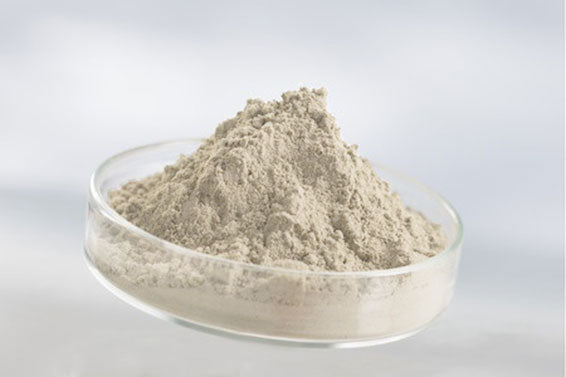
Calling bentonite clay "dirt" is a bit more accurate, since it is, after all, a kind of clay. Yet it deserves a more detailed explanation. Like DE, bentonite clay contains a collection of trace minerals, but it's mainly composed of the mineral montmorillonite, which comes from volcanic ash. Bentonite clay deposits are mined and ground into a light brown, earthy powder.
There are two main grades of bentonite clay: industrial grade and food grade. There are also different varieties of bentonite clay with different concentrations of minerals. The two most common types of bentonite clay are calcium bentonite and sodium bentonite.
Sodium bentonite is generally mined for industrial uses and is usually not a good choice to take internally. Like all forms of bentonite clay, it expands when it absorbs liquid, but sodium bentonite can absorb much more than any other type of bentonite clay. This can be problematic if it swells in your stomach or intestines. It can, however, be used externally. Calcium bentonite has much lower sodium content and doesn't swell as much, which makes it safer to take internally, and this is generally the kind people use for this purpose.
The second thing to remember is that you need to get food grade bentonite clay if you are going to be ingesting it, just like DE. Food grade bentonite clay is cleaner and more carefully handled than industrial-grade bentonite clay.
Benefits and Uses of Bentonite Clay
Supplement and Detox
People take bentonite clay as a supplement and a way to detox the digestive system. Similar to DE, bentonite clay is rich in silica, though it does not contain as much as DE. Bentonite clay also has, like DE, trace minerals that can be beneficial for your body.
Like DE, bentonite clay is absorptive, which allows it to draw heavy metals and other toxins and help them pass out of the body. One big difference between DE and bentonite clay, however, is that bentonite clay is much smoother than DE. This means that bentonite clay doesn't have the same abrasiveness necessary to "scrub" your insides the way DE does.
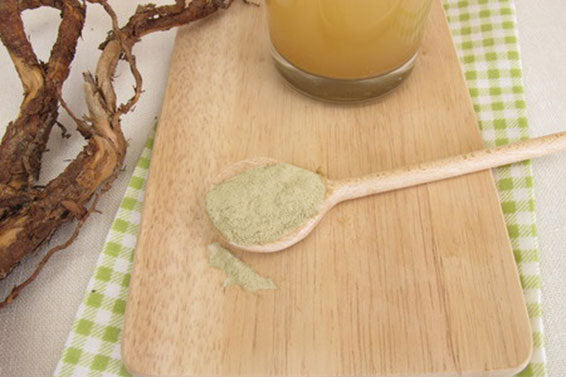
Like DE, it is best to take bentonite clay between meals. There are several ways to take it. The first and simplest is to mix a teaspoon of bentonite clay in a glass of water and drink it down. The problem with this method is that as soon as the clay mixes with the water, it begins to expand. This expansion can continue in your stomach and intestines, causing constipation. To reduce the likelihood of this problem, mix the bentonite clay with water and then let it sit anywhere from a few minutes to a few hours, allowing the clay to absorb as much water as possible and expand as far as it can before it enters your body. Then, you can either drink the entire glass down, or you can just drink the clearer water in the top half of the glass. Many people only drink the clearer water in the top of the glass and find that it is enough for them.
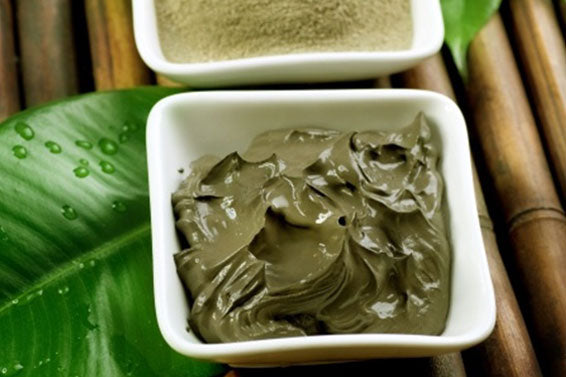
Another way you can take bentonite clay is to make a bentonite clay gel. This is done by mixing approximately two-parts water with one-part bentonite clay. After the clay absorbs the water, it becomes a smooth paste that has many uses. You can mix a tablespoon of this gel in a glass of water and drink it.
Bentonite clay can cause a detox reaction, like DE, with flu-like symptoms. These symptoms should go away after a few days. If they persist or get worse, reduce your bentonite clay intake, and drink more water.
People who take bentonite clay internally report better digestive health, increased energy, improved immune system, detoxification from toxins, better skin, body alkalization, and other signs of improved health.
First Aid
The clay gel we mentioned has other uses as well. Bentonite clay fans often keep a container of it on hand for small emergencies. They have found bentonite clay to work well on bruises, bee stings, bug bites, and minor burns. The cool mud offers pain relief, and its absorptive properties help draw out toxins and other things can cause irritation in the skin, like mosquito bites. For a good video that explains more about how that works, click here.
Clay Bath
You can add bentonite clay to your bath as a way to detox your skin. Simply add anywhere between ¼ cup and 1 cup of bentonite clay powder to your bathwater. You can also add a few drops of lavender essential oil if you like. Clay baths help draw toxins from your skin, and they can also help your skin to feel softer.
Chemical-Free Hygiene

Bentonite clay has a long list of other uses. You can use it as a facemask, an ingredient in homemade toothpaste, baby powder, and more. A quick Google search will yield all sorts of DIY recipes for bentonite clay.
Precautions
We do not endorse any brand of bentonite clay or taking bentonite clay internally. We are simply presenting some of the information about DE and bentonite clay for the sake of comparison.
We don't recommend using DE and bentonite clay internally at the same time, since both substances have been known to cause constipation, and taking them simultaneously could make it worse. If you would like to try both, try them one at a time.
If you experience constipation while taking bentonite, it's usually because you are taking too much or are not drinking enough water. Drink more water and lower your bentonite clay dosage, and any constipation you experience should go away. Also keep in mind that bentonite clay can swell as it absorbs liquid, which can cause or complicate constipation.
Second, the FDA has recently warned consumers to not use a certain brand of bentonite clay because of the raised levels of lead it contains. So if you decide to consume bentonite clay, be sure to do your research and find a reputable brand.
Finally, be cautious about taking bentonite clay while you are on prescription medication, and talk to your doctor if you have any questions or concerns. Because bentonite clay is absorptive, it can interfere with medication if they are taken too closely together. We do not recommend taking bentonite clay while on medication.
Which Is More Cost-Effective?
If you are trying to decide between using diatomaceous earth and bentonite clay, one thing to consider is how much they cost. We took a look at the Amazon.com listings for both products and discovered that the average cost of bentonite clay is about $8.20 per pound, while the average cost of diatomaceous earth is about $3.70 per pound. Because DE and bentonite clay have many common uses, you are probably better off buying DE if you have any of those uses in mind. Each substance, however, has qualities and uses that are completely unique, so what you are going to use if for also determines which one you will want to buy.
We've put together a chart that shows the pros and cons of diatomaceous earth and bentonite clay to help you make the right choice for you.
| Benefits | Diatomaceous Earth | Bentonite Clay |
|---|---|---|
| Cleanses Internally | Yes | Yes |
| Absorbs Toxins | Yes | Yes |
| Abrasive | Yes | No |
| Good for Bruises, Burns and Bug Bites | No | Yes |
| Kills Bugs | Yes (pest control grade) | No |
| Household Cleaning Agent | Yes | No |
| Naturally Preserves Grain | Yes | No |
| Nourishes Skin | No | Yes |
| Nourishes Hair | No | Yes |
| Contains Trace Minerals | Yes | Yes |
| Contains Silica | Yes | Yes |
| Cost-Effective | Yes | Not as much |
| Drawbacks | Diatomaceous Earth | Bentonite Clay |
|---|---|---|
| Can Cause Constipation When Ingested | Yes | Yes |
| Can Irritate Lungs if Inhaled | Yes | Yes |
| Dries Out Skin | Yes | No |
| Can Cause Detox Symptoms | Yes | Yes |
| Swells, Causing Higher Risk of Constipation | No | Yes |
| Only Certain Brands/Grades Are Safe | Yes | Yes |
| Cost | Low | Higher |


